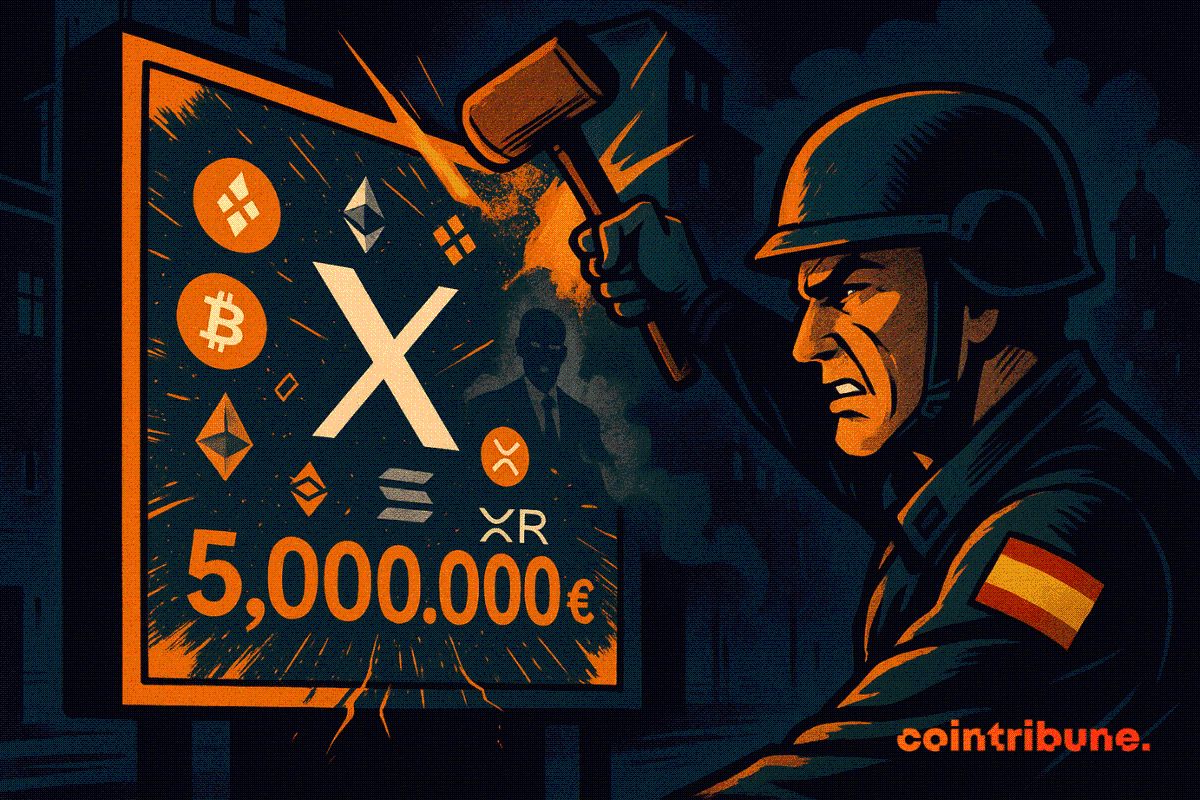Bitcoin's On-Chain Resilience: A New Era of Institutional Accumulation and Inflation Hedging
- Bitcoin's 2025 on-chain data shows institutional accumulation rising as short-term retail holdings shrink by 30-38% amid macroeconomic volatility. - Gini coefficient hits 0.4677, with whale wallets (10,000+ BTC) adding 16,000 BTC, mirroring 2019 bull market patterns. - BTC's 0.76 correlation with equities and inverse -0.65 with Fed rates solidifies its role as inflation hedge, outperforming gold's static supply model. - 64% of supply now held for 1+ years, with $104k-$108k identified as critical support
In 2025, Bitcoin's on-chain metrics reveal a seismic shift in investor behavior, painting a compelling narrative of institutional consolidation and retail recalibration. As the cryptocurrency navigates a volatile macroeconomic landscape—marked by geopolitical tensions, regulatory scrutiny, and the aftermath of the Bybit security breach—its role as a long-term wealth accumulator and inflation hedge is becoming increasingly evident.
The On-Chain Story: From Retail Retreat to Institutional Reinforcement
Bitcoin's on-chain data tells a tale of two markets. Short-term holders (STHs) have been capitulating, with UTXO buckets representing positions held for under 18 months shrinking by 30–38% in Q1–Q2 2025. For instance, the “1–3 Months” UTXO bucket plummeted from 18.6 million to 11.4 million, signaling a sharp reduction in speculative trading. Meanwhile, long-term holders (LTHs) have deepened their conviction. The “Over 8 Years” UTXO bucket grew by 5% to 26.4 million, while the UTXO Value Distribution for this cohort increased by 3.5% to 4.48 million BTC. This divergence underscores a maturing market where retail uncertainty is being counterbalanced by institutional and whale accumulation.
The Gini coefficient, a measure of wealth concentration, rose to 0.4677 in Q2 2025, reflecting a modest but meaningful consolidation of Bitcoin's supply among large holders. Wallets holding 10,000+ BTC added 16,000 BTC during Q2–Q3, with a Whale Accumulation Score of 0.90—a level last seen during the 2019 bull market. This behavior mirrors historical patterns where strategic accumulation by whales precedes sustained price appreciation.
Bitcoin vs. Inflation: A Growing Correlation with CPI and Gold
Bitcoin's price in 2025 has exhibited a strong inverse correlation with the U.S. Federal Reserve's policy rate (-0.65 over two years) and a direct correlation of 0.76 with U.S. equities. The July 2025 CPI report, which showed a headline rate of 2.7% and core inflation of 3.1%, triggered a 93.9% probability of a Fed rate cut, sending Bitcoin to $137,000. This dynamic reinforces Bitcoin's role as a strategic hedge against monetary easing.
Comparisons to gold, the traditional inflation hedge, further highlight Bitcoin's growing appeal. While gold's real returns have lagged due to its lack of yield and limited supply elasticity, Bitcoin's deflationary supply model (21 million cap) and programmable scarcity make it a more compelling store of value in a low-interest-rate environment. The UTXO Realized Price Distribution (URPD) model now identifies $104,000–$108,000 as a critical support zone, backed by 1.15 million BTC accumulated over the past year. This dense cluster of realized prices suggests Bitcoin's price floor is strengthening, even as macroeconomic headwinds persist.
Institutional Confidence and the "HODL" Mentality
The 1+ Year HODL Wave now accounts for 64% of Bitcoin's total supply, the highest in its history. This statistic is not just a technical indicator—it's a behavioral one. Long-term holders, including institutional investors and early adopters, are not cashing out. Instead, they're deepening their positions during dips, a strategy that mirrors the accumulation patterns of gold during the 2008 financial crisis.
Mid-tier holders (100–1,000 BTC) have also increased their share of the total supply to 23.07%, indicating strategic accumulation by sophisticated investors. Meanwhile, smaller retail addresses (0.001–0.01 BTC) show surges in “buy the dip” activity, but the 0.01–0.1 BTC bucket experiences net outflows. This duality underscores a market where institutional confidence is countering retail fragmentation.
Investment Implications: Positioning for the Long Game
For investors, the on-chain data and macroeconomic trends point to a clear thesis: Bitcoin is transitioning from a speculative asset to a strategic, inflation-protected store of value. Here's how to position accordingly:
1. Buy the Dip, Not the Noise: The 5% increase in the “Over 8 Years” UTXO bucket and the URPD support zone at $104,000–$108,000 suggest dips are opportunities to accumulate.
2. Diversify Beyond Retail Volatility: Allocate a portion of your portfolio to Bitcoin as a hedge against fiat devaluation, especially as the Fed's rate-cut cycle gains momentum.
3. Monitor Institutional Signals: Track the Whale Accumulation Score and Gini coefficient to gauge institutional sentiment. A score above 0.85 historically precedes sustained bull runs.
Conclusion: The New Gold Standard
Bitcoin's on-chain metrics and macroeconomic correlations are reshaping its narrative from a volatile speculative asset to a cornerstone of long-term wealth preservation. As institutional accumulation accelerates and retail uncertainty wanes, the cryptocurrency is proving its resilience in a world where inflation and liquidity are the dominant forces. For investors with a multi-year horizon, Bitcoin is no longer a fringe bet—it's a strategic allocation in the new financial order.
The data is clear: the future of money is being written in code, and those who HODL are poised to reap the rewards.
Disclaimer: The content of this article solely reflects the author's opinion and does not represent the platform in any capacity. This article is not intended to serve as a reference for making investment decisions.
You may also like
Spain Pins X for Illegal Crypto Promotion

Crypto Market Turns Cautious as Bitcoin Slips and Fear Index Hits Extreme Lows

XRP ETF Price Crash Explained
XRP Is Not Bitcoin Or Ethereum, Says Canary CEO As XRPC ETF Launches